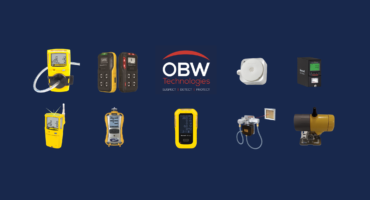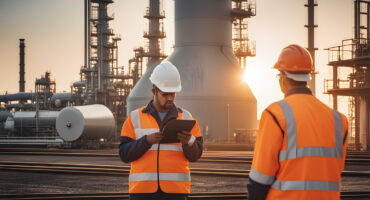The wastewater industry has many confined spaces that contain toxic and/or flammable gases, as well as inert gases that can displace ambient air and create oxygen-deficient environments.
These can come in the form of a variety of toxic and combustible gas hazards, such as ammonia, methane, chlorine, hydrogen sulfide and volatile organic chemicals. It’s nearly impossible to eliminate these hazards, so one must be able to detect them to protect equipment and personnel.
We recommend a combination of fixed gas detectors, life safety controllers and portable gas detectors to drive safety and compliance throughout a facility:
Fixed gas detectors.
These permanently mounted detectors, which may be a combination of transmitters and sensors, add a layer protection for assets while providing early warnings to workers prior to their entry of the area.
Life safety controllers.
These user-friendly controllers can activate outputs such as alarms, strobes, and ventilation. Life safety controllers, unlike programmable logic controllers (PLCs), have a built-in display and allow for simplified setup and operation.
Portable gas detectors.
As a type of personal protective equipment (PPE), these wearable devices monitor gas levels in a worker’s breathing zone. Portables protect workers when they go beyond the detection perimeter of a fixed detector or when a fixed detector is not present, and they can also allow for sampling of the atmosphere of confined spaces prior to a worker’s entry.
PROTECT YOUR WORKERS BY AVOIDING THESE FIVE CRITICAL SAFETY PITFALLS:
1 – Failure to identify gas threats before starting work
While working on a pipe valve that was leaking sludge, two mechanics recently died due to high levels of hydrogen sulphide an incident that could have been prevented by air-quality measurements. Remember to always assess the atmospheric conditions of a confined space prior to entry. That typically means using a pumped multi-gas detector to assess the area for oxygen levels; combustible gases, such as methane, at their lower explosive limit; and toxic gases such as hydrogen sulphide and carbon monoxide. If workers take a break from the job, make sure to sample the atmosphere again prior to re-entry
2 – Failure to continuously monitor the atmosphere during work.
Atmospheres can change. Just because the air quality in a confined space is deemed safe prior to entry doesn’t mean it will stay that way. Once you determine the atmosphere in a confined space is safe, make sure workers use portable gas detectors as part of their personal protective equipment (PPE) in accordance to their safety training. The detectors will alert workers to rising gas levels so they know to leave the area. No alarm should be ignored.
3 – Focusing only on the standard compliance gases.
Safety managers may equip confined-space workers with portable four-gas detectors to monitor the most common gas hazards, including oxygen levels, combustible gases, hydrogen sulphide and carbon monoxide. But these standard compliance detectors are not always sufficient for the wastewater industry, which may include additional hazards such as volatile organic compounds (VOCs), chlorine, ozone or ammonia. If a confined space includes one of these gases, consider providing workers with five-gas portable detectors. The fifth sensor can be configured for the team’s needs.
4 – Using Emergency Services as your only rescue plan.
Many safety incidents happen because team leaders focus on reactive response versus proactive monitoring of threats. Therefore, whenever workers are inside a confined space, there should be an attendant outside who uses a pumped detector to continue monitoring changes in gas concentration. If the attendant sees that a gas level is climbing quickly, he or she can communicate with workers and coordinate evacuation if necessary. Otherwise, if a crew’s only plan is to call emergency services, the rescue most likely will not happen in time.
5 – Performing hot works without checking for the presence of flammable gas.
In the sludge concentration building at one wastewater treatment plant, several workers were recently injured in an explosion caused by the use of a welding torch around methane gas. To help prevent this kind of incident, use a portable gas detector to monitor the atmosphere for potentially flammable gases — both before and during hot works such as welding and soldering.

From the Blog



If you have any questions about our products or services, please feel free to contact us.

Join our mailing list to receive the latest news and updates from our team.